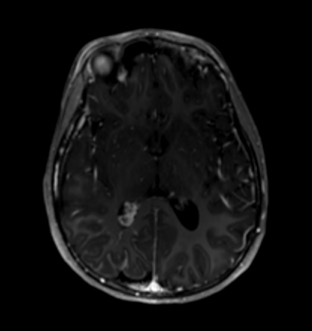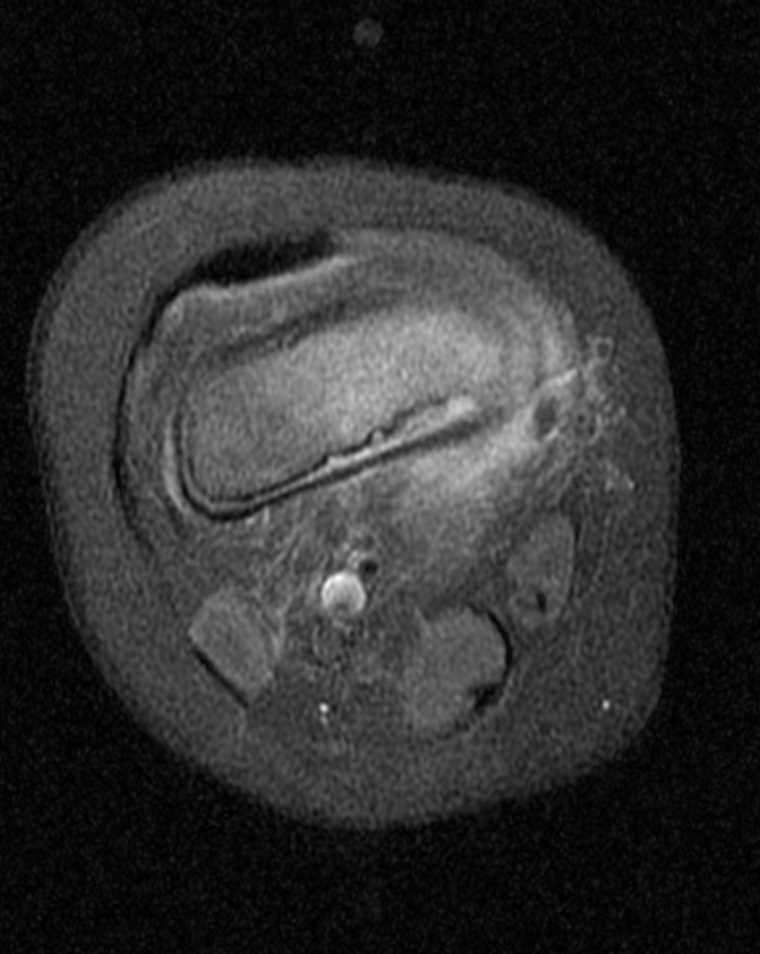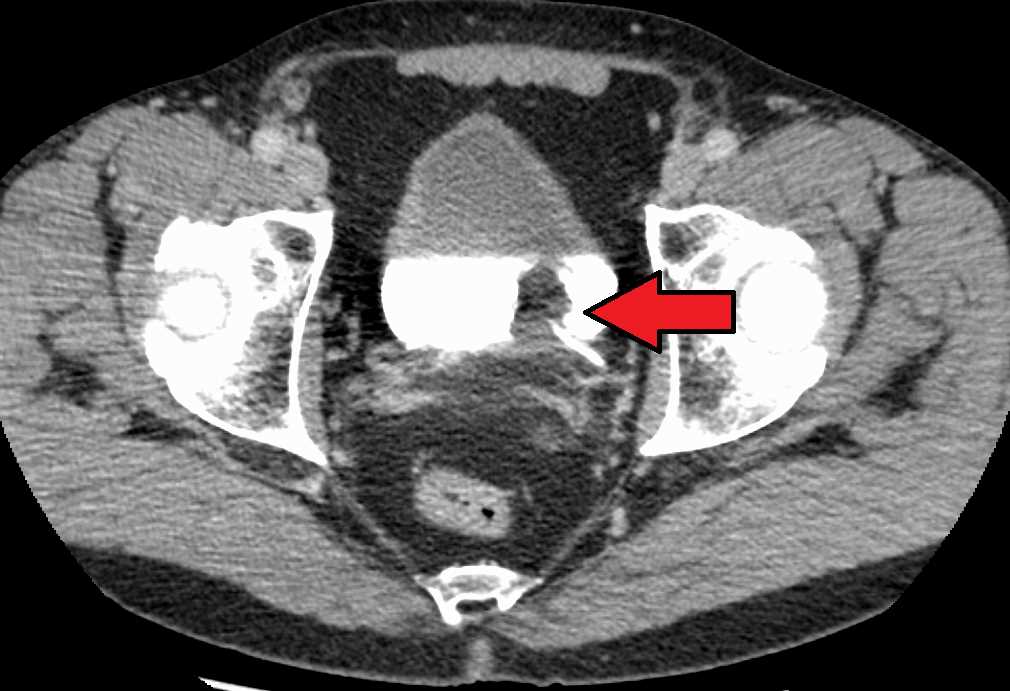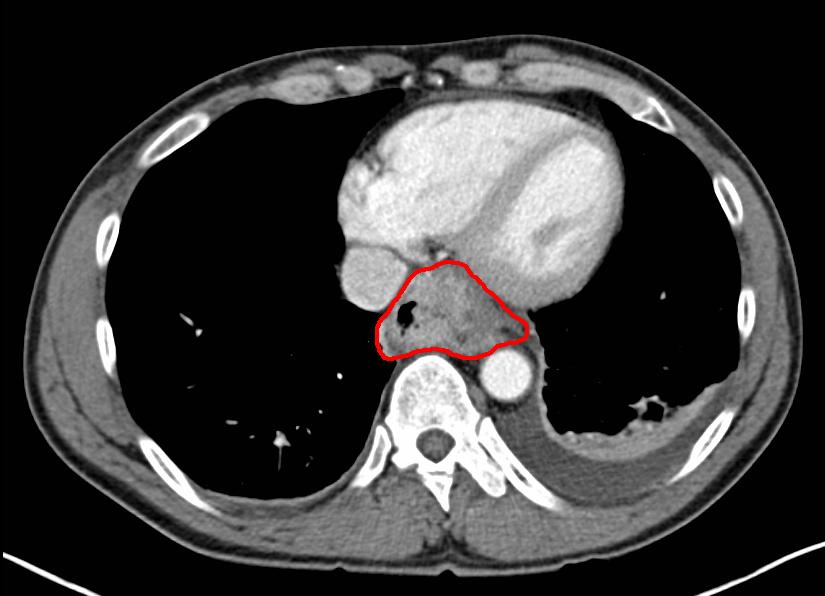[1]
Kułakowski A. The contribution of Marie Skłodowska-Curie to the development of modern oncology. Analytical and bioanalytical chemistry. 2011 Jun:400(6):1583-6. doi: 10.1007/s00216-011-4712-1. Epub
[PubMed PMID: 21331492]
[2]
Mazonakis M, Damilakis J. Computed tomography: What and how does it measure? European journal of radiology. 2016 Aug:85(8):1499-504. doi: 10.1016/j.ejrad.2016.03.002. Epub 2016 Mar 10
[PubMed PMID: 26995675]
[3]
Willatt J, Ruma JA, Azar SF, Dasika NL, Syed F. Imaging of hepatocellular carcinoma and image guided therapies - how we do it. Cancer imaging : the official publication of the International Cancer Imaging Society. 2017 Mar 4:17(1):9. doi: 10.1186/s40644-017-0110-z. Epub 2017 Mar 4
[PubMed PMID: 28259177]
[4]
Burrowes DP, Medellin A, Harris AC, Milot L, Wilson SR. Contrast-enhanced US Approach to the Diagnosis of Focal Liver Masses. Radiographics : a review publication of the Radiological Society of North America, Inc. 2017 Sep-Oct:37(5):1388-1400. doi: 10.1148/rg.2017170034. Epub
[PubMed PMID: 28898188]
[6]
Hahn ST, Pfammatter T, Cho KJ. Carbon dioxide gas as a venous contrast agent to guide upper-arm insertion of central venous catheters. Cardiovascular and interventional radiology. 1995 May-Jun:18(3):146-9
[PubMed PMID: 7648588]
[7]
Schaverien MV, Evison D, McCulley SJ. Management of large volume CT contrast medium extravasation injury: technical refinement and literature review. Journal of plastic, reconstructive & aesthetic surgery : JPRAS. 2008:61(5):562-5; discussion 565
[PubMed PMID: 17459795]
[8]
Buijs SB, Barentsz MW, Smits MLJ, Gratama JWC, Spronk PE. Systematic review of the safety and efficacy of contrast injection via venous catheters for contrast-enhanced computed tomography. European journal of radiology open. 2017:4():118-122. doi: 10.1016/j.ejro.2017.09.002. Epub 2017 Sep 29
[PubMed PMID: 29034281]
Level 1 (high-level) evidence
[9]
Coyle D, Bloomgarden D, Beres R, Patel S, Sane S, Hurst E. Power injection of contrast media via peripherally inserted central catheters for CT. Journal of vascular and interventional radiology : JVIR. 2004 Aug:15(8):809-14
[PubMed PMID: 15297584]
[10]
Hinzpeter R, Eberhard M, Gutjahr R, Reeve K, Pfammatter T, Lachat M, Schmidt B, Flohr TG, Kolb B, Alkadhi H. CT Angiography of the Aorta: Contrast Timing by Using a Fixed versus a Patient-specific Trigger Delay. Radiology. 2019 May:291(2):531-538. doi: 10.1148/radiol.2019182223. Epub 2019 Mar 5
[PubMed PMID: 30835189]
[11]
Chaturvedi A, Oppenheimer D, Rajiah P, Kaproth-Joslin KA, Chaturvedi A. Contrast opacification on thoracic CT angiography: challenges and solutions. Insights into imaging. 2017 Feb:8(1):127-140. doi: 10.1007/s13244-016-0524-3. Epub 2016 Nov 17
[PubMed PMID: 27858323]
[12]
Hale Z, Hanna E, Miyake M, Rosser CJ. Imaging the urologic patient: the utility of intravenous pyelogram in the CT scan era. World journal of urology. 2014 Feb:32(1):137-42. doi: 10.1007/s00345-013-1085-4. Epub 2013 Apr 25
[PubMed PMID: 23615746]
[13]
Spampinato MV, Abid A, Matheus MG. Current Radiographic Iodinated Contrast Agents. Magnetic resonance imaging clinics of North America. 2017 Nov:25(4):697-704. doi: 10.1016/j.mric.2017.06.003. Epub 2017 Aug 23
[PubMed PMID: 28964459]
[14]
Baerlocher MO, Asch M, Myers A. The use of contrast media. CMAJ : Canadian Medical Association journal = journal de l'Association medicale canadienne. 2010 Apr 20:182(7):697. doi: 10.1503/cmaj.090118. Epub 2010 Mar 15
[PubMed PMID: 20231343]
[15]
Costa N. Understanding contrast media. Journal of infusion nursing : the official publication of the Infusion Nurses Society. 2004 Sep-Oct:27(5):302-12
[PubMed PMID: 15385894]
Level 3 (low-level) evidence
[16]
Bae KT. Intravenous contrast medium administration and scan timing at CT: considerations and approaches. Radiology. 2010 Jul:256(1):32-61. doi: 10.1148/radiol.10090908. Epub
[PubMed PMID: 20574084]
[17]
Schima W, Kulinna C, Langenberger H, Ba-Ssalamah A. Liver metastases of colorectal cancer: US, CT or MR? Cancer imaging : the official publication of the International Cancer Imaging Society. 2005 Nov 23:5 Spec No A(Spec No A):S149-56
[PubMed PMID: 16361131]
[18]
Luk L, Steinman J, Newhouse JH. Intravenous Contrast-Induced Nephropathy-The Rise and Fall of a Threatening Idea. Advances in chronic kidney disease. 2017 May:24(3):169-175. doi: 10.1053/j.ackd.2017.03.001. Epub
[PubMed PMID: 28501080]
Level 3 (low-level) evidence
[19]
Beckett KR, Moriarity AK, Langer JM. Safe Use of Contrast Media: What the Radiologist Needs to Know. Radiographics : a review publication of the Radiological Society of North America, Inc. 2015 Oct:35(6):1738-50. doi: 10.1148/rg.2015150033. Epub
[PubMed PMID: 26466182]
[20]
van der Molen AJ, Reimer P, Dekkers IA, Bongartz G, Bellin MF, Bertolotto M, Clement O, Heinz-Peer G, Stacul F, Webb JAW, Thomsen HS. Post-contrast acute kidney injury - Part 1: Definition, clinical features, incidence, role of contrast medium and risk factors : Recommendations for updated ESUR Contrast Medium Safety Committee guidelines. European radiology. 2018 Jul:28(7):2845-2855. doi: 10.1007/s00330-017-5246-5. Epub 2018 Feb 9
[PubMed PMID: 29426991]
[21]
van der Molen AJ, Reimer P, Dekkers IA, Bongartz G, Bellin MF, Bertolotto M, Clement O, Heinz-Peer G, Stacul F, Webb JAW, Thomsen HS. Post-contrast acute kidney injury. Part 2: risk stratification, role of hydration and other prophylactic measures, patients taking metformin and chronic dialysis patients : Recommendations for updated ESUR Contrast Medium Safety Committee guidelines. European radiology. 2018 Jul:28(7):2856-2869. doi: 10.1007/s00330-017-5247-4. Epub 2018 Feb 7
[PubMed PMID: 29417249]
[22]
Wyman RM, Safian RD, Portway V, Skillman JJ, McKay RG, Baim DS. Current complications of diagnostic and therapeutic cardiac catheterization. Journal of the American College of Cardiology. 1988 Dec:12(6):1400-6
[PubMed PMID: 2973480]
[23]
Nash K, Hafeez A, Hou S. Hospital-acquired renal insufficiency. American journal of kidney diseases : the official journal of the National Kidney Foundation. 2002 May:39(5):930-6
[PubMed PMID: 11979336]
[24]
Mervak BM, Cohan RH, Ellis JH, Khalatbari S, Davenport MS. Intravenous Corticosteroid Premedication Administered 5 Hours before CT Compared with a Traditional 13-Hour Oral Regimen. Radiology. 2017 Nov:285(2):425-433. doi: 10.1148/radiol.2017170107. Epub 2017 Jul 26
[PubMed PMID: 28745940]
[25]
Badrick T, Turner P. The Uncertainty of the eGFR. Indian journal of clinical biochemistry : IJCB. 2013 Jul:28(3):242-7. doi: 10.1007/s12291-012-0280-1. Epub 2012 Dec 28
[PubMed PMID: 24426218]
[26]
Davenport MS, Khalatbari S, Cohan RH, Dillman JR, Myles JD, Ellis JH. Contrast material-induced nephrotoxicity and intravenous low-osmolality iodinated contrast material: risk stratification by using estimated glomerular filtration rate. Radiology. 2013 Sep:268(3):719-28. doi: 10.1148/radiol.13122276. Epub 2013 Apr 11
[PubMed PMID: 23579046]
[27]
Baek S, Park SH, Won E, Park YR, Kim HJ. Propensity score matching: a conceptual review for radiology researchers. Korean journal of radiology. 2015 Mar-Apr:16(2):286-96. doi: 10.3348/kjr.2015.16.2.286. Epub 2015 Feb 27
[PubMed PMID: 25741190]
[28]
McDonald JS, McDonald RJ, Carter RE, Katzberg RW, Kallmes DF, Williamson EE. Risk of intravenous contrast material-mediated acute kidney injury: a propensity score-matched study stratified by baseline-estimated glomerular filtration rate. Radiology. 2014 Apr:271(1):65-73. doi: 10.1148/radiol.13130775. Epub 2014 Jan 16
[PubMed PMID: 24475854]
[29]
Rao QA, Newhouse JH. Risk of nephropathy after intravenous administration of contrast material: a critical literature analysis. Radiology. 2006 May:239(2):392-7
[PubMed PMID: 16543592]
[30]
Rudnick MR, Leonberg-Yoo AK, Litt HI, Cohen RM, Hilton S, Reese PP. The Controversy of Contrast-Induced Nephropathy With Intravenous Contrast: What Is the Risk? American journal of kidney diseases : the official journal of the National Kidney Foundation. 2020 Jan:75(1):105-113. doi: 10.1053/j.ajkd.2019.05.022. Epub 2019 Aug 28
[PubMed PMID: 31473019]
Level 3 (low-level) evidence
[31]
Lameire NH. Contrast-induced nephropathy--prevention and risk reduction. Nephrology, dialysis, transplantation : official publication of the European Dialysis and Transplant Association - European Renal Association. 2006 Jun:21(6):i11-23
[PubMed PMID: 16723348]
[32]
Fakhran S, Alhilali L, Kale H, Kanal E. Assessment of rates of acute adverse reactions to gadobenate dimeglumine: review of more than 130,000 administrations in 7.5 years. AJR. American journal of roentgenology. 2015 Apr:204(4):703-6. doi: 10.2214/AJR.14.13430. Epub
[PubMed PMID: 25794059]
[33]
Wang CL, Cohan RH, Ellis JH, Caoili EM, Wang G, Francis IR. Frequency, outcome, and appropriateness of treatment of nonionic iodinated contrast media reactions. AJR. American journal of roentgenology. 2008 Aug:191(2):409-15. doi: 10.2214/AJR.07.3421. Epub
[PubMed PMID: 18647910]
[34]
Boehm I. Seafood allergy and radiocontrast media: are physicians propagating a myth? The American journal of medicine. 2008 Aug:121(8):e19. doi: 10.1016/j.amjmed.2008.03.035. Epub
[PubMed PMID: 18691465]
[35]
Boyd B, Zamora CA, Castillo M. Managing Adverse Reactions to Contrast Agents. Magnetic resonance imaging clinics of North America. 2017 Nov:25(4):737-742. doi: 10.1016/j.mric.2017.06.008. Epub
[PubMed PMID: 28964463]
[36]
Yoon SH, Lee SY, Kang HR, Kim JY, Hahn S, Park CM, Chang YS, Goo JM, Cho SH. Skin tests in patients with hypersensitivity reaction to iodinated contrast media: a meta-analysis. Allergy. 2015 Jun:70(6):625-37. doi: 10.1111/all.12589. Epub 2015 Mar 20
[PubMed PMID: 25649510]
Level 1 (high-level) evidence
[37]
Bush WH, Swanson DP. Acute reactions to intravascular contrast media: types, risk factors, recognition, and specific treatment. AJR. American journal of roentgenology. 1991 Dec:157(6):1153-61
[PubMed PMID: 1950858]
[39]
Katayama H, Yamaguchi K, Kozuka T, Takashima T, Seez P, Matsuura K. Adverse reactions to ionic and nonionic contrast media. A report from the Japanese Committee on the Safety of Contrast Media. Radiology. 1990 Jun:175(3):621-8
[PubMed PMID: 2343107]
[40]
Lasser EC, Berry CC, Talner LB, Santini LC, Lang EK, Gerber FH, Stolberg HO. Pretreatment with corticosteroids to alleviate reactions to intravenous contrast material. The New England journal of medicine. 1987 Oct 1:317(14):845-9
[PubMed PMID: 3627208]
[41]
Davenport MS, Mervak BM, Ellis JH, Dillman JR, Dunnick NR, Cohan RH. Indirect Cost and Harm Attributable to Oral 13-Hour Inpatient Corticosteroid Prophylaxis before Contrast-enhanced CT. Radiology. 2016 May:279(2):492-501. doi: 10.1148/radiol.2015151143. Epub 2015 Nov 4
[PubMed PMID: 26536404]
[42]
Abe S, Fukuda H, Tobe K, Ibukuro K. Protective effect against repeat adverse reactions to iodinated contrast medium: Premedication vs. changing the contrast medium. European radiology. 2016 Jul:26(7):2148-54. doi: 10.1007/s00330-015-4028-1. Epub 2015 Oct 1
[PubMed PMID: 26427700]
[43]
Kim YS, Choi YH, Cho YJ, Lee S, Yoon SH, Park CM, Kang HR. Incidence of Breakthrough Reaction in Patients with Prior Acute Allergic-Like Reactions to Iodinated Contrast Media according to the Administration Route. Korean journal of radiology. 2018 Mar-Apr:19(2):352-357. doi: 10.3348/kjr.2018.19.2.352. Epub 2018 Feb 22
[PubMed PMID: 29520194]
[44]
Thomsen HS, Morcos SK, Almén T, Aspelin P, Bellin MF, Clément O, Heinz-Peer G, Reimer P, Stacul F, van der Molen AJ, Webb JA. Metformin and contrast media. Radiology. 2010 Aug:256(2):672-3; author reply 673. doi: 10.1148/radiol.100566. Epub
[PubMed PMID: 20656850]
[46]
Sinan T, Al-Khawari H, Chishti FA, Al Saeed OM, Sheikh M. Contrast media extravasation: manual versus power injector. Medical principles and practice : international journal of the Kuwait University, Health Science Centre. 2005 Mar-Apr:14(2):107-10
[PubMed PMID: 15785103]
[47]
Williamson EE, McKinney JM. Assessing the adequacy of peripherally inserted central catheters for power injection of intravenous contrast agents for CT. Journal of computer assisted tomography. 2001 Nov-Dec:25(6):932-7
[PubMed PMID: 11711806]
[48]
Cohan RH, Ellis JH, Garner WL. Extravasation of radiographic contrast material: recognition, prevention, and treatment. Radiology. 1996 Sep:200(3):593-604
[PubMed PMID: 8756899]
[49]
Mehrizi M, Pascuzzi RM. Complications of radiologic contrast in patients with myasthenia gravis. Muscle & nerve. 2014 Sep:50(3):443-4. doi: 10.1002/mus.24254. Epub 2014 Aug 5
[PubMed PMID: 24677227]
[50]
Bettmann MA. Frequently asked questions: iodinated contrast agents. Radiographics : a review publication of the Radiological Society of North America, Inc. 2004 Oct:24 Suppl 1():S3-10
[PubMed PMID: 15486247]
[51]
Plewes DB, Kucharczyk W. Physics of MRI: a primer. Journal of magnetic resonance imaging : JMRI. 2012 May:35(5):1038-54. doi: 10.1002/jmri.23642. Epub
[PubMed PMID: 22499279]
[52]
Hendrick RE, Haacke EM. Basic physics of MR contrast agents and maximization of image contrast. Journal of magnetic resonance imaging : JMRI. 1993 Jan-Feb:3(1):137-48
[PubMed PMID: 8428081]
[53]
Ramalho J, Ramalho M, Jay M, Burke LM, Semelka RC. Gadolinium toxicity and treatment. Magnetic resonance imaging. 2016 Dec:34(10):1394-1398. doi: 10.1016/j.mri.2016.09.005. Epub 2016 Sep 28
[PubMed PMID: 27693607]
[54]
Bussi S, Coppo A, Botteron C, Fraimbault V, Fanizzi A, De Laurentiis E, Colombo Serra S, Kirchin MA, Tedoldi F, Maisano F. Differences in gadolinium retention after repeated injections of macrocyclic MR contrast agents to rats. Journal of magnetic resonance imaging : JMRI. 2018 Mar:47(3):746-752. doi: 10.1002/jmri.25822. Epub 2017 Jul 21
[PubMed PMID: 28730643]
[55]
Endrikat J, Dohanish S, Schleyer N, Schwenke S, Agarwal S, Balzer T. 10 Years of Nephrogenic Systemic Fibrosis: A Comprehensive Analysis of Nephrogenic Systemic Fibrosis Reports Received by a Pharmaceutical Company from 2006 to 2016. Investigative radiology. 2018 Sep:53(9):541-550. doi: 10.1097/RLI.0000000000000462. Epub
[PubMed PMID: 29547493]
[56]
Semelka RC, Ramalho J, Vakharia A, AlObaidy M, Burke LM, Jay M, Ramalho M. Gadolinium deposition disease: Initial description of a disease that has been around for a while. Magnetic resonance imaging. 2016 Dec:34(10):1383-1390. doi: 10.1016/j.mri.2016.07.016. Epub 2016 Aug 13
[PubMed PMID: 27530966]
[57]
Broome DR, Girguis MS, Baron PW, Cottrell AC, Kjellin I, Kirk GA. Gadodiamide-associated nephrogenic systemic fibrosis: why radiologists should be concerned. AJR. American journal of roentgenology. 2007 Feb:188(2):586-92
[PubMed PMID: 17242272]
[58]
Abu-Alfa AK. Nephrogenic systemic fibrosis and gadolinium-based contrast agents. Advances in chronic kidney disease. 2011 May:18(3):188-98. doi: 10.1053/j.ackd.2011.03.001. Epub
[PubMed PMID: 21531325]
Level 3 (low-level) evidence
[59]
Namasivayam S, Kalra MK, Torres WE, Small WC. Adverse reactions to intravenous iodinated contrast media: a primer for radiologists. Emergency radiology. 2006 Jul:12(5):210-5
[PubMed PMID: 16688432]
[60]
Granata V, Cascella M, Fusco R, dell'Aprovitola N, Catalano O, Filice S, Schiavone V, Izzo F, Cuomo A, Petrillo A. Immediate Adverse Reactions to Gadolinium-Based MR Contrast Media: A Retrospective Analysis on 10,608 Examinations. BioMed research international. 2016:2016():3918292. doi: 10.1155/2016/3918292. Epub 2016 Aug 29
[PubMed PMID: 27652261]
Level 2 (mid-level) evidence
[61]
Heshmatzadeh Behzadi A, Farooq Z, Newhouse JH, Prince MR. MRI and CT contrast media extravasation: A systematic review. Medicine. 2018 Mar:97(9):e0055. doi: 10.1097/MD.0000000000010055. Epub
[PubMed PMID: 29489663]
Level 1 (high-level) evidence
[62]
Panych LP, Madore B. The physics of MRI safety. Journal of magnetic resonance imaging : JMRI. 2018 Jan:47(1):28-43. doi: 10.1002/jmri.25761. Epub 2017 May 19
[PubMed PMID: 28543948]
[63]
Puac P, Rodríguez A, Vallejo C, Zamora CA, Castillo M. Safety of Contrast Material Use During Pregnancy and Lactation. Magnetic resonance imaging clinics of North America. 2017 Nov:25(4):787-797. doi: 10.1016/j.mric.2017.06.010. Epub 2017 Sep 8
[PubMed PMID: 28964468]
[64]
Dietrich CF, Averkiou M, Nielsen MB, Barr RG, Burns PN, Calliada F, Cantisani V, Choi B, Chammas MC, Clevert DA, Claudon M, Correas JM, Cui XW, Cosgrove D, D'Onofrio M, Dong Y, Eisenbrey J, Fontanilla T, Gilja OH, Ignee A, Jenssen C, Kono Y, Kudo M, Lassau N, Lyshchik A, Franca Meloni M, Moriyasu F, Nolsøe C, Piscaglia F, Radzina M, Saftoiu A, Sidhu PS, Sporea I, Schreiber-Dietrich D, Sirlin CB, Stanczak M, Weskott HP, Wilson SR, Willmann JK, Kim TK, Jang HJ, Vezeridis A, Westerway S. How to perform Contrast-Enhanced Ultrasound (CEUS). Ultrasound international open. 2018 Jan:4(1):E2-E15. doi: 10.1055/s-0043-123931. Epub 2018 Feb 7
[PubMed PMID: 29423461]
[65]
Wang S, Hossack JA, Klibanov AL. Targeting of microbubbles: contrast agents for ultrasound molecular imaging. Journal of drug targeting. 2018 Jun-Jul:26(5-6):420-434. doi: 10.1080/1061186X.2017.1419362. Epub 2018 Jan 9
[PubMed PMID: 29258335]
[66]
Furrer MA, Spycher SCJ, Büttiker SM, Gross T, Bosshard P, Thalmann GN, Schneider MP, Roth B. Comparison of the Diagnostic Performance of Contrast-enhanced Ultrasound with That of Contrast-enhanced Computed Tomography and Contrast-enhanced Magnetic Resonance Imaging in the Evaluation of Renal Masses: A Systematic Review and Meta-analysis. European urology oncology. 2020 Aug:3(4):464-473. doi: 10.1016/j.euo.2019.08.013. Epub 2019 Sep 27
[PubMed PMID: 31570270]
Level 1 (high-level) evidence
[67]
Basu S, Hess S, Nielsen Braad PE, Olsen BB, Inglev S, Høilund-Carlsen PF. The Basic Principles of FDG-PET/CT Imaging. PET clinics. 2014 Oct:9(4):355-70, v. doi: 10.1016/j.cpet.2014.07.006. Epub 2014 Aug 5
[PubMed PMID: 26050942]
[68]
Dhull VS, Rana N, Nazar AH. Contrast Media in PET/Computed Tomography Imaging. PET clinics. 2016 Jan:11(1):85-94. doi: 10.1016/j.cpet.2015.07.007. Epub 2015 Sep 16
[PubMed PMID: 26590446]
[69]
Haubenreisser H, Bigdeli A, Meyer M, Kremer T, Riester T, Kneser U, Schoenberg SO, Henzler T. From 3D to 4D: Integration of temporal information into CT angiography studies. European journal of radiology. 2015 Dec:84(12):2421-4. doi: 10.1016/j.ejrad.2015.06.014. Epub 2015 Jun 18
[PubMed PMID: 26152869]
[70]
Gupta RK, Bang TJ. Prevention of Contrast-Induced Nephropathy (CIN) in Interventional Radiology Practice. Seminars in interventional radiology. 2010 Dec:27(4):348-59. doi: 10.1055/s-0030-1267860. Epub
[PubMed PMID: 22550376]
[71]
Goldfarb S, McCullough PA, McDermott J, Gay SB. Contrast-induced acute kidney injury: specialty-specific protocols for interventional radiology, diagnostic computed tomography radiology, and interventional cardiology. Mayo Clinic proceedings. 2009 Feb:84(2):170-9. doi: 10.1016/S0025-6196(11)60825-2. Epub
[PubMed PMID: 19181651]
[72]
de Havenon A, Mossa-Basha M, Shah L, Kim SE, Park M, Parker D, McNally JS. High-resolution vessel wall MRI for the evaluation of intracranial atherosclerotic disease. Neuroradiology. 2017 Dec:59(12):1193-1202. doi: 10.1007/s00234-017-1925-9. Epub 2017 Sep 23
[PubMed PMID: 28942481]
[73]
Vilela P, Rowley HA. Brain ischemia: CT and MRI techniques in acute ischemic stroke. European journal of radiology. 2017 Nov:96():162-172. doi: 10.1016/j.ejrad.2017.08.014. Epub 2017 Aug 24
[PubMed PMID: 29054448]
[74]
Johns CS, Swift AJ, Hughes PJC, Ohno Y, Schiebler M, Wild JM. Pulmonary MR angiography and perfusion imaging-A review of methods and applications. European journal of radiology. 2017 Jan:86():361-370. doi: 10.1016/j.ejrad.2016.10.003. Epub 2016 Oct 4
[PubMed PMID: 28341390]
[75]
Cheng K, Cassidy F, Aganovic L, Taddonio M, Vahdat N. CT urography: how to optimize the technique. Abdominal radiology (New York). 2019 Dec:44(12):3786-3799. doi: 10.1007/s00261-019-02111-2. Epub
[PubMed PMID: 31317210]





